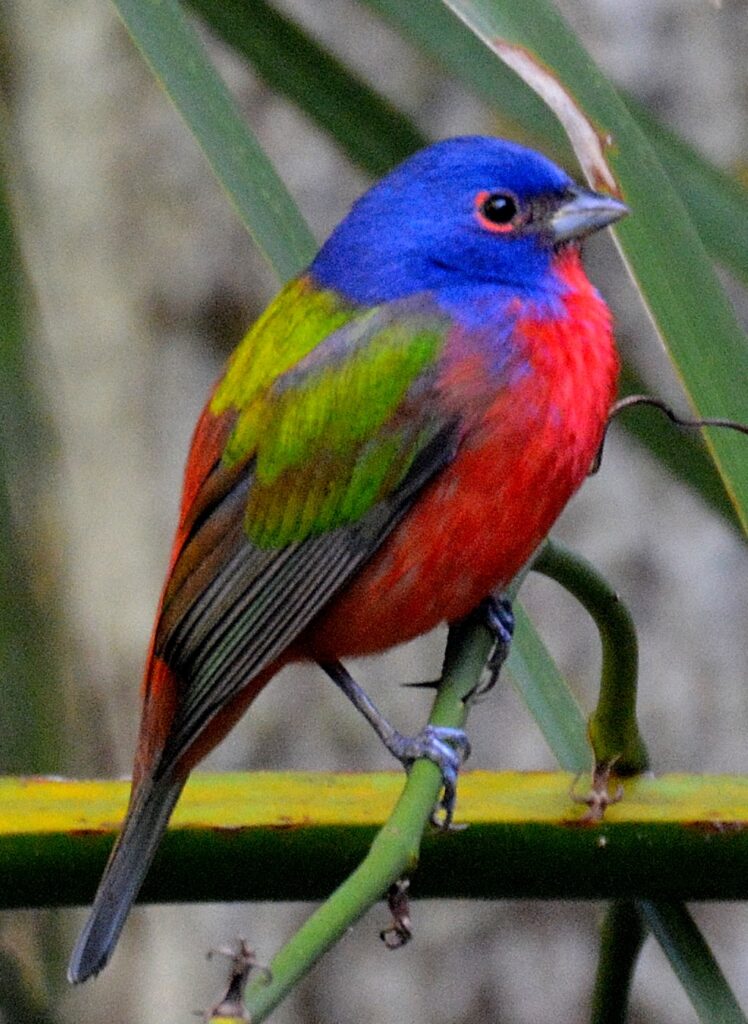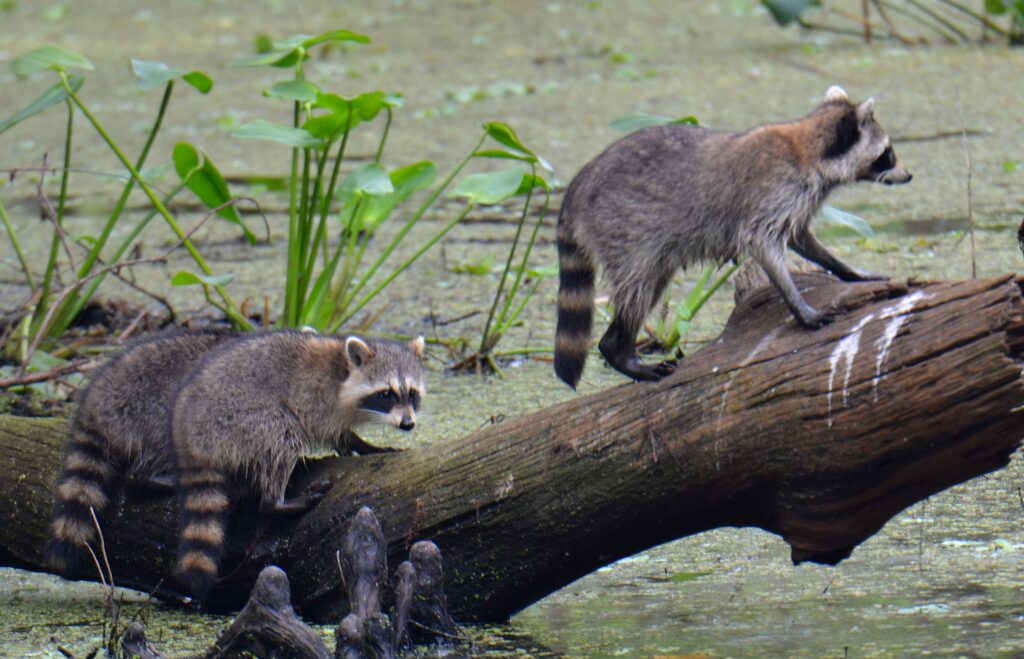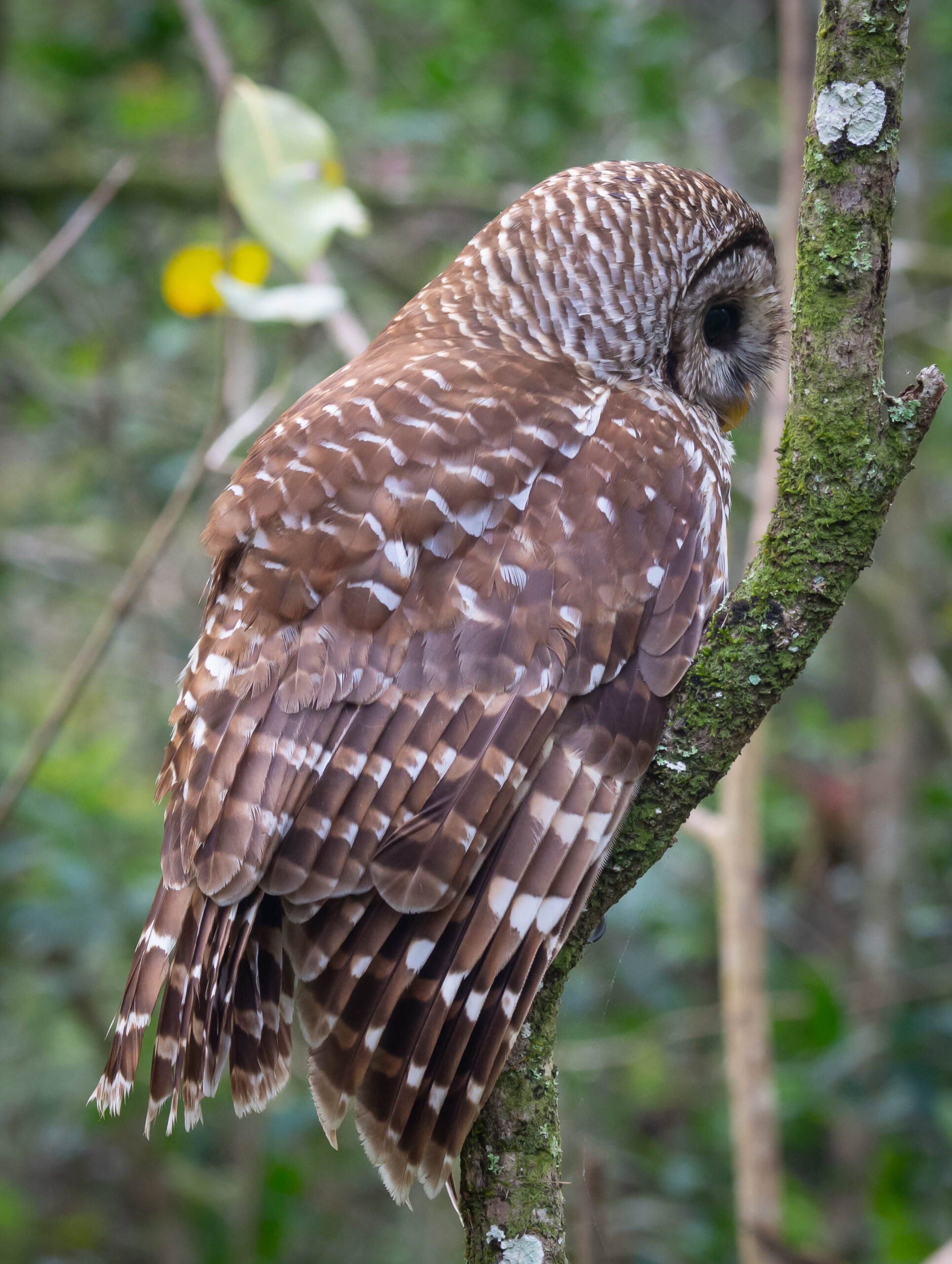
Corkscrew Swamp Sanctuary– 2/18/2022
by Bill Gadbow
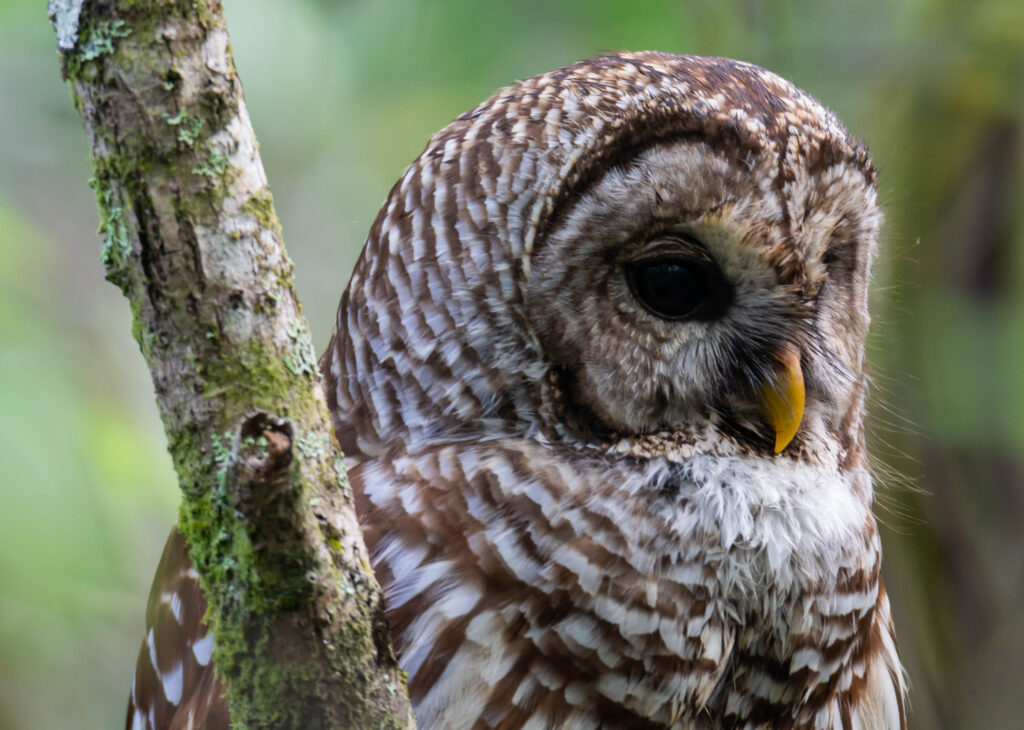
Two of my best days birding ever were in the Audubon Society’s Corkscrew Sanctuary in February of 2017. I was super-excited to be able to show this fantastic birding Mecca to Chris in 2022. We were required to set up a timed reservation and bought our seventeen-dollar tickets for the first slot at 8:00 AM. We were among only a few humans to get there so early. Unfortunately, there were also hardly any birds. I assured Chris that we would see a lot of birds when we got to the lakes and pools at the far side of the boardwalk. Except for a single owl sleeping about ten feet from the boardwalk and a Carolina Wren singing in the bushes, we didn’t see any birds at all. The pools where I expected to see huge flocks of wading birds, including Wood Storks and Spoonbills, had a couple Anhinga, several Great Egrets, and one Little Blue Heron. Where were all the birds???!!!???

A ranger told us that there have been no storks and very few wading birds at Corkscrew Swamp for years. The problem is that the water level is too high. The birds need shallow water for fishing for two reasons. First, although they are tall for birds, they still are not that tall. Second, the shallow water funnels the fish into concentrated pools where the birds have a much better chance of catching them.
Getting the water levels just right
I checked back on my pictures from my previous visit where I had seen many hundreds of wading birds and that was in 2017. I went to the internet and started looking up info on water levels at Corkscrew Swamp. In 2018, there were articles warning that the water levels were dangerously LOW. The swamps were drying out in the summer, which threatened the cypress trees. Corkscrew Swamp is the world’s largest remaining old growth bald cypress forest, so protecting the trees is critical.
I couldn’t find any articles that indicated that a deliberate decision had been made to raise the water levels, but I did find lots of discussions on the difficulty of using engineering to do what Nature used to do on its own – maintain a consistent water level over a massive, flat environment. Corkscrew Swamp is twenty miles from the Gulf of Mexico, but still only seventeen feet above sea level. For a very long time, vast sheets of shallow water moved slowly across southern Florida and the water levels were amazingly consistent year to year, rising during the rainy season starting in June and gradually dropping during the dryer seasons. The huge flocks of wading birds were able to depend on vast hunting grounds and nested with the assurance that there would be plenty of food to feed their young. With large-scale agriculture and increasing human population – both using lots of water and also requiring flood control – this consistent water level has been extremely difficult to replicate. It isn’t that the hydrologists aren’t trying.
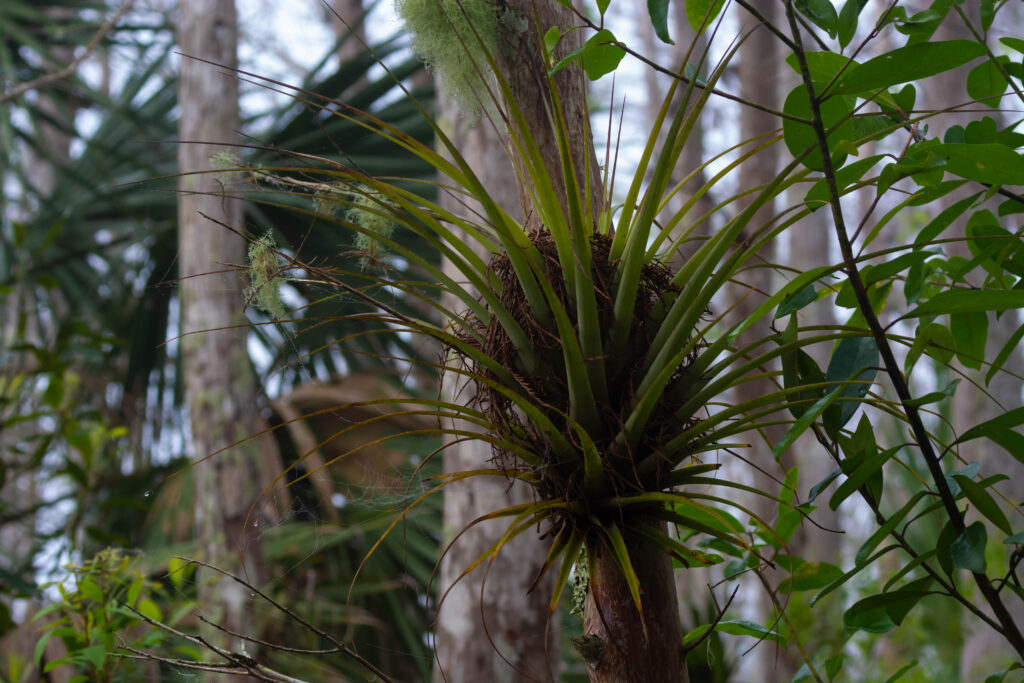
So, are the storks in trouble?
Ninety percent of the wading bird population of Florida is gone compared to the 1930s, when 5000 to 15,000 breeding pairs of Wood Storks could be found in the Everglades. By 1995, the number of breeding pairs was down to 500, and the Wood Stork population in the United States was on the endangered species list. Since then, the habitat restoration has been successful to the point where the U. S. Wood Stork conservation status has been upgraded to threatened. There are currently about 30,000 Wood Storks in the U. S. and 250,000 worldwide.
In 2018, the year after my prior visit, there were 250 breeding pairs of Wood Storks in the Corkscrew Swamp Sanctuary. In 2019, there were only two Wood Storks fledged in the sanctuary. In 2022, there are no breeding Wood Storks in the sanctuary. That doesn’t necessarily mean that these storks died off. They have relocated to more favorable nesting sites in northern Florida, Georgia, and South Carolina.
On the advice of one of the rangers at Corkscrew Swamp, we went to nearby CREW Bird Rookery Swamp to see wading birds, including Wood Storks. We spent just two hours at Corkscrew Swamp and used the rest of the morning to visit CREW. That visit turned out well and is documented in a separate article in this month’s website updates.
But before you go to look at the CREW photos, look below to check out the photos from 2017.

Corkscrew swamp in the good old days of 2017
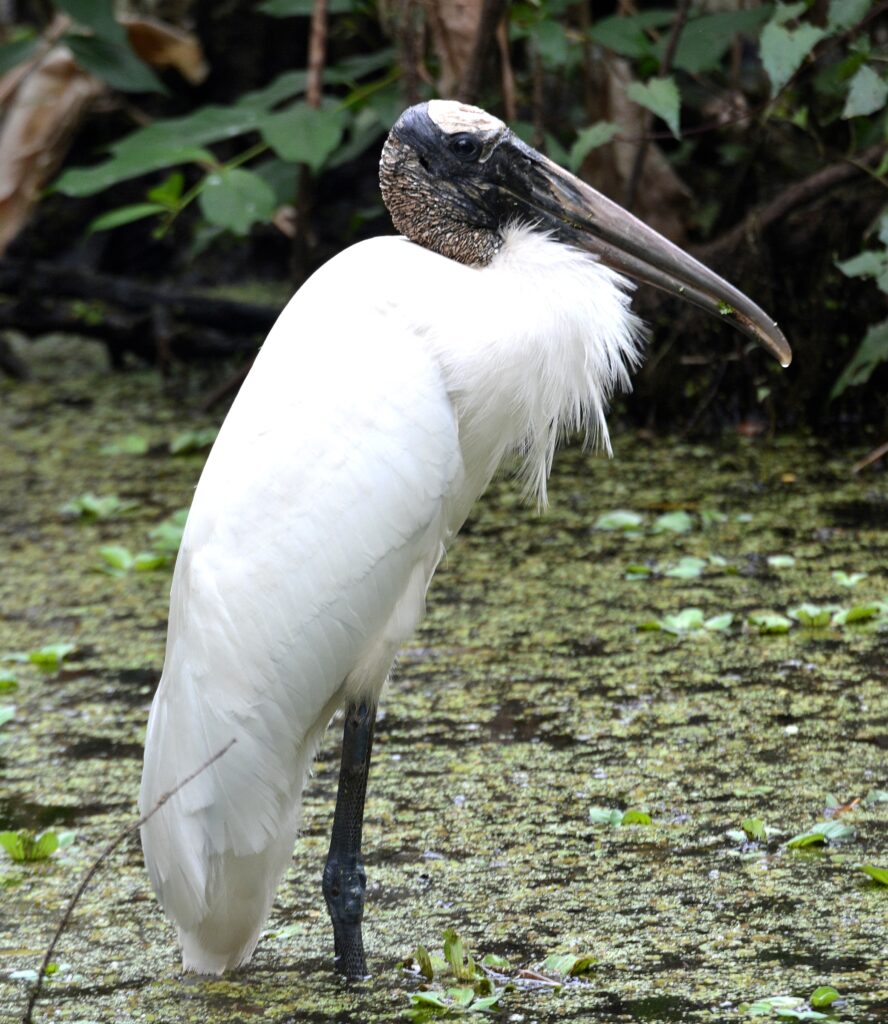
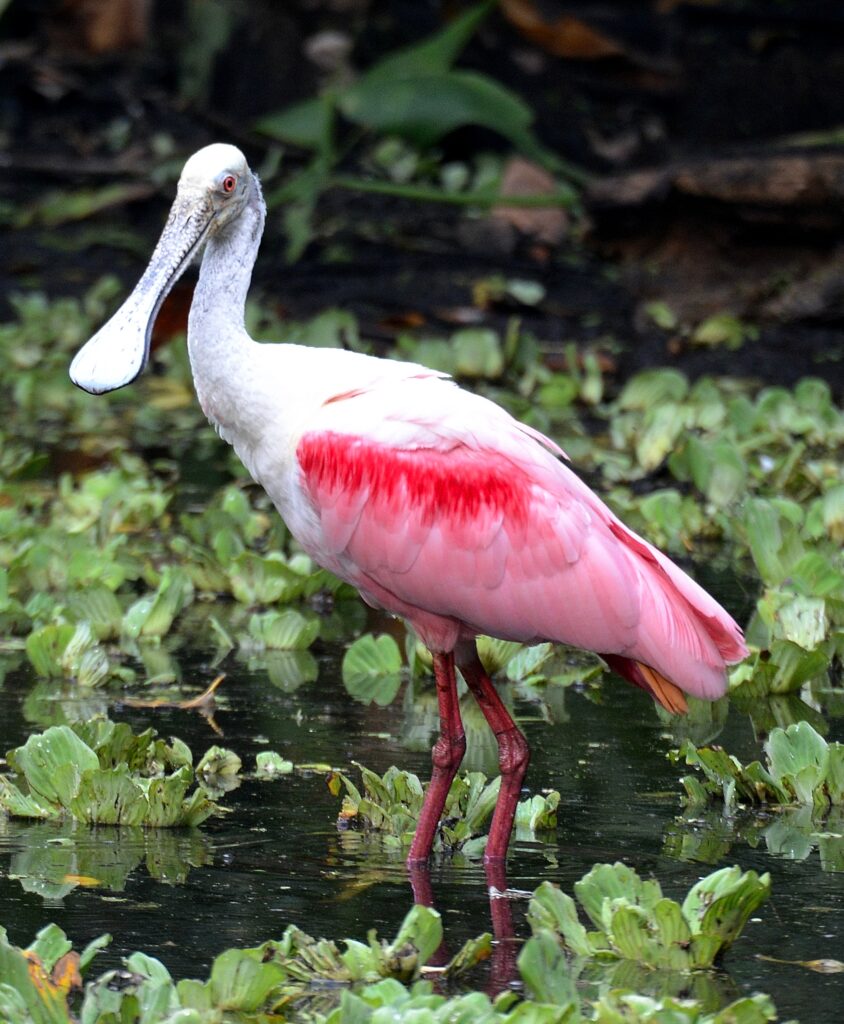
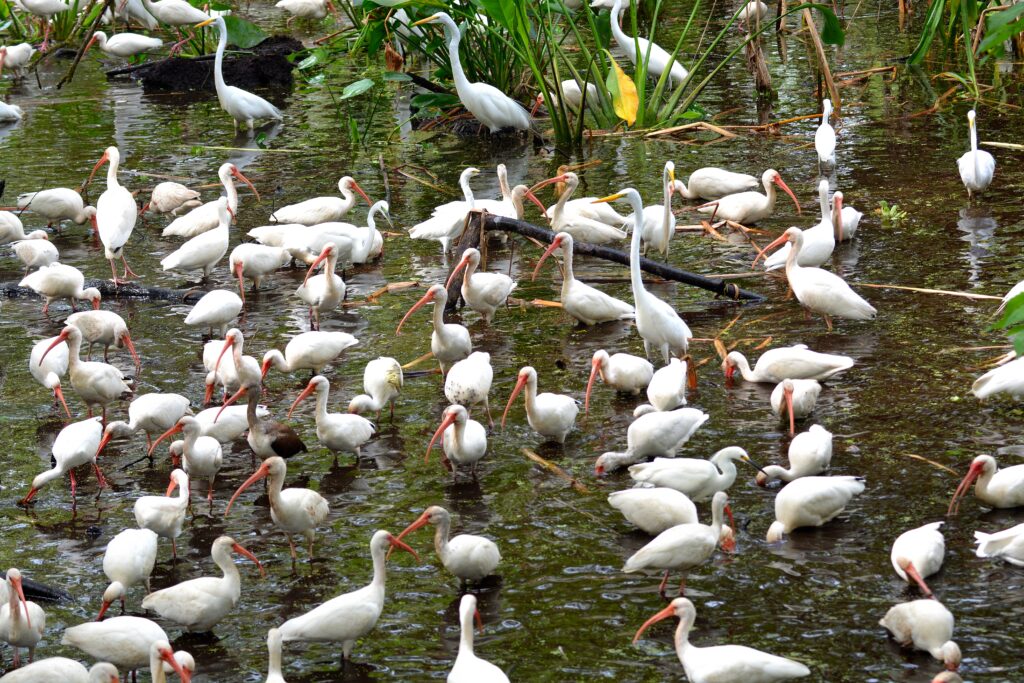
How storks eat
When you watch egrets and herons hunt for food, you will see them poised stock still and staring into the water. Then they strike lightning quick. Wood Storks hunt completely differently. They catch their food by feel, not by sight. The fancy word for this is tactolocation. They swish their open beaks through the murky water, and when they touch prey, usually a small fish, their bill snaps shut with a 25-millisecond reflex. This reflex action is the fastest known for vertebrates.

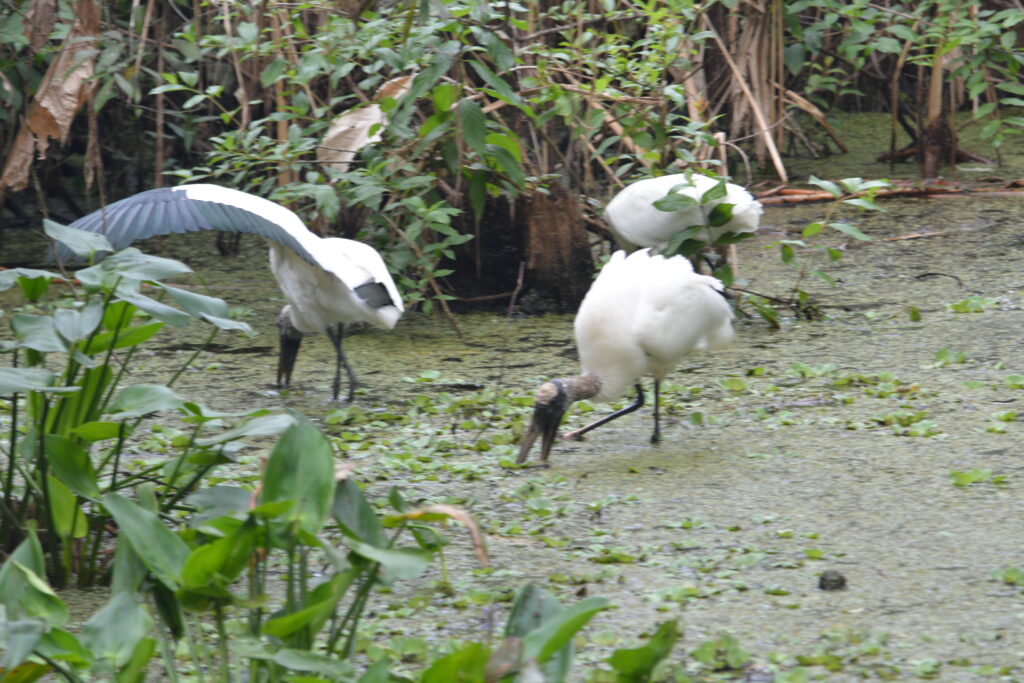
Mixed Flocks 2017
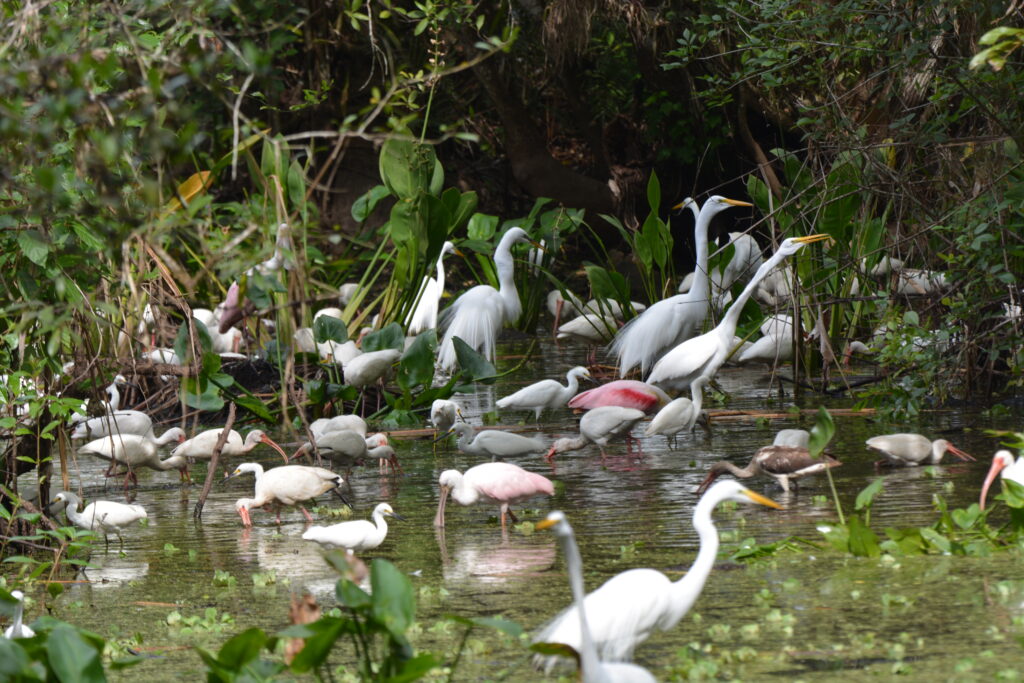
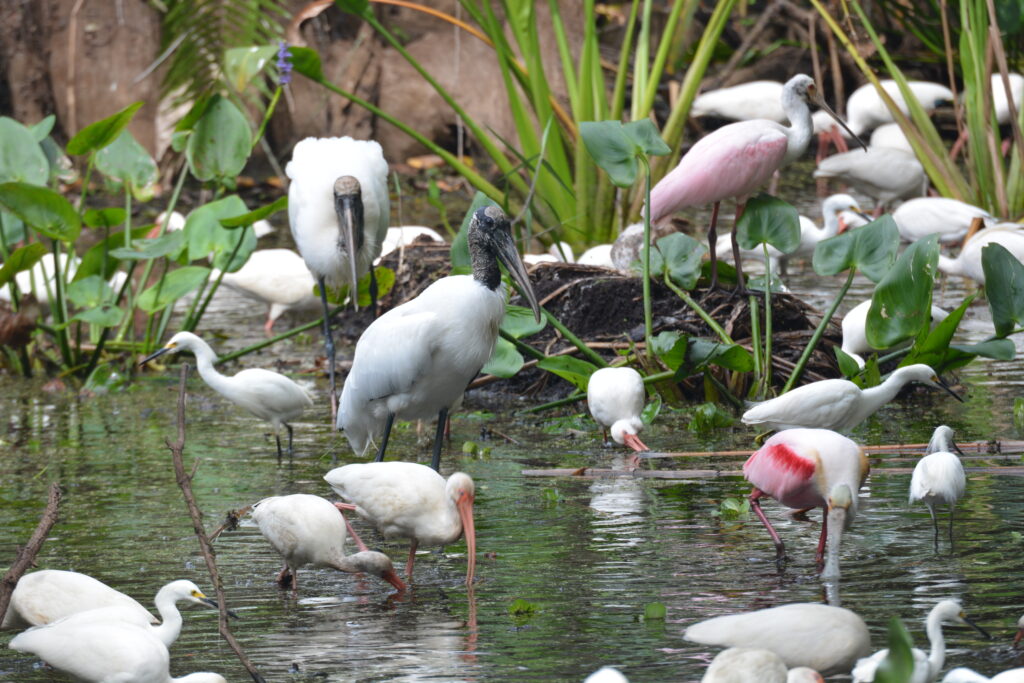
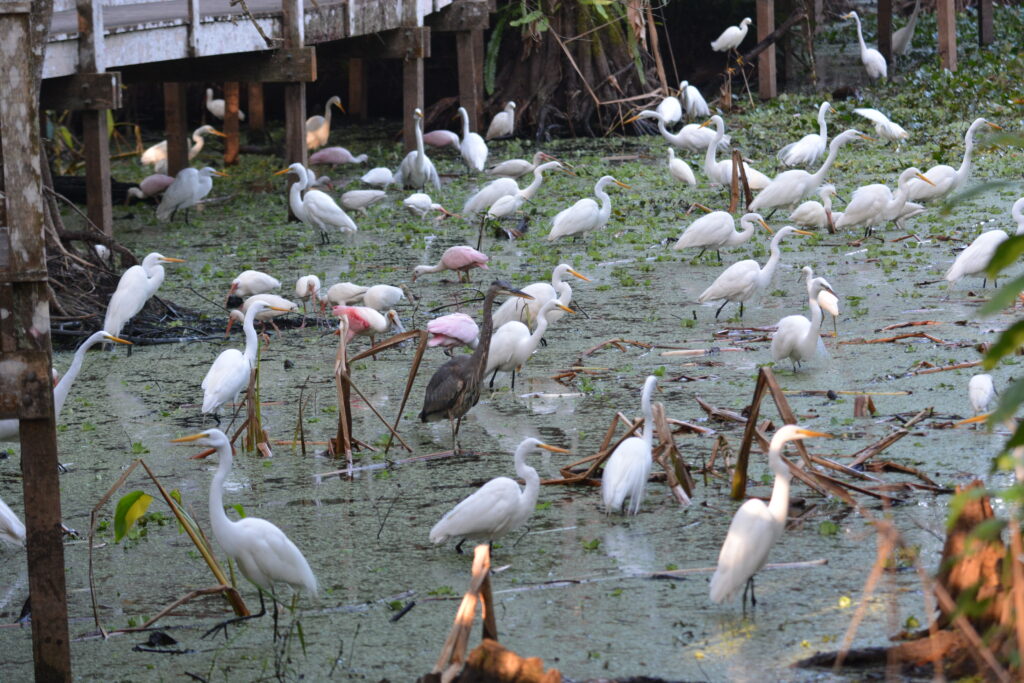

More waders 2017
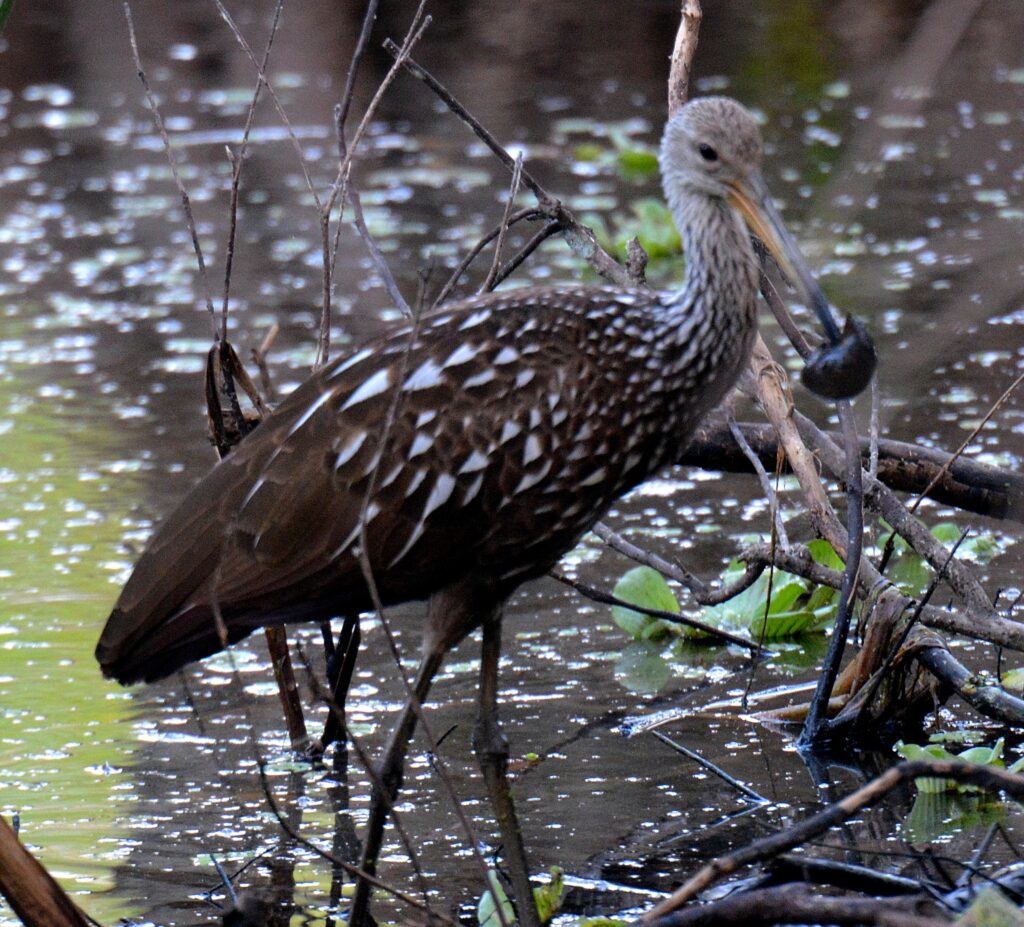



Some Special Gems 2017
